Table of contents
Sea buckthorn berries ( Hippophae rhamnoides ) are mainly used to make juice and fruit puree, which are also available organically . Raw, the orange berries are known for their high vitamin C content.
Use in the kitchen
Can you eat sea buckthorn raw? Raw sea buckthorn berries have a juicy, pulpy consistency. They taste very sour and bitter, which is why they are not popular for direct consumption. The berries are usually cooked before being processed into juice or puree. However, the raw fruit can also be processed.
Sea buckthorn juice is an orange-colored, thick fruit juice. It is used as an ingredient in mixed drinks, cocktails, liqueurs and lemonades. Delicious jams, fruit spreads and compotes can be made from the fruit puree. Sea buckthorn desserts such as ice cream (vegan) or sorbets are quick to prepare. Sea buckthorn puree can also be frozen in ice cube portions and served with a drink on hot summer days.
Spicy sea buckthorn variations such as chutneys (with apples and peppers ), dressings (with ginger ) or soups (with carrots ) are a fine change.
In dried form, the berries are used as a spice or to flavor teas. There is also sea buckthorn oil, which is made either from the pulp or from the seeds.
Homemade sea buckthorn juice
Wash the raw sea buckthorn berries and use a juicer to extract the juice. Raw sea buckthorn juice can be kept in the fridge for two to three days.
Alternatively, you can briefly boil the washed berries in a pan with a little water. Then puree them and filter the juice through a sieve or strainer. Mix the juice with sugar in a pan (2:1) and bring to the boil again. Pour the hot liquid into clean, sealable bottles and seal them immediately.
If necessary, sea buckthorn juice can be sweetened with honey, agave syrup, sugar, date syrup or elderflower syrup.
Vegan recipe for sea buckthorn jam
Ingredients (for approx. 1 l jam): 1 kg sea buckthorn berries, 100 ml orange juice, 500 g gelling sugar (2:1).
Preparation: Sterilize the jars. Wash the sea buckthorn berries and drain well. Put the berries in a pan and bring to the boil with orange juice over a low heat. After about 20 minutes, the sea buckthorn should be soft. Press the cooked berries through a fine-mesh sieve and collect the berry puree in a pan. Mix the puree with the gelling sugar. Bring to the boil over a medium heat and simmer for 5 minutes. Remove the pan from the heat and do a gelling test. To do this, put one to two teaspoons of the mixture on a plate. If the jam is solid after two to three minutes, it is ready. Otherwise, you have to cook it for another one to two minutes. Pour the finished jam into the clean jars and seal tightly.
Tea preparation
Dried berries are ideal for making tea. To do this, put 1 teaspoon of berries in a cup or tea strainer and pour over 200 ml of boiling water. Cover and leave to steep for 5 to 10 minutes, then strain and sweeten if necessary.
Vegan recipes with sea buckthorn berries (raw) can be found under the note: " Recipes that have the most of this ingredient ".
| Not only vegans or vegetarians should read this: Vegans often eat unhealthily. Avoidable nutritional errors . |
Purchasing - Storage
Fresh, raw sea buckthorn berries can rarely be bought in the supermarket. Seasonally, you can occasionally find them at weekly markets or in farm shops.
Various products made from sea buckthorn are available from wholesalers, such as sea buckthorn juice, sea buckthorn pulp (often referred to as fruit spread, jam or puree), dried sea buckthorn berries, sea buckthorn tea and sea buckthorn oil. There are also numerous cosmetic products with sea buckthorn extracts.
You can find sea buckthorn products in supermarkets such as Coop, Migros, Spar, Rewe, Edeka, some of which are organic. Denner, Volg, Aldi, Lidl, Hofer and Billa do not have these in their regular range. Health food stores and organic supermarkets such as Denn's Biomarkt and Alnatura also sell products containing sea buckthorn.
The availability of sea buckthorn berries and sea buckthorn products varies depending on the size of the store, catchment area, etc. You can find our recorded food prices for the DA-CH countries above under the ingredient image - and by clicking you can see their development at various suppliers.
Wild
sea buckthorn grows throughout Eurasia on sand dunes by the sea, on the banks of rivers and streams, and on embankments in alpine areas. 5
Wild populations are found in Switzerland, especially in Valais, Ticino and Graubünden, in Germany along the North and Baltic Sea coasts and in southern Germany. 6,7 In Austria, sea buckthorn grows along rivers such as the Salzach, Inn, Isar, Lech and Danube. 8
Storage tips
Sea buckthorn berries do not last very long when raw, so they should be processed quickly once they have been freshly picked. Unpasteurized and opened juices should be kept in the refrigerator and consumed within a few days. Unopened, pasteurized bottles have a shelf life of at least 12 months or until the stated best-before date.
Ingredients - Nutritional values - Calories
Raw sea buckthorn berries have an energy content of 92 kcal per 100 g. They contain 9.3 g of carbohydrates, 3.3 g of which are sugar. The fruits are relatively rich in fiber, with 3 g/100g. This corresponds to 12% of the daily requirement. They have little protein (1.4 g/100g). 1
The fat content is relatively high for berries at 7.1 g/100g. The ratio of LA:ALA (omega-6 to omega-3 fatty acids) is ideal. 1 Read more about this below.
Sea buckthorn (raw) is known for its high content of vitamin C (ascorbic acid) . 100 g of berries contain an average of 450 mg of vitamin C (563% of the daily requirement). 1 In comparison, lemons and oranges contain only 53 mg/100g. Other fruits with a high vitamin C content are guava (228 mg/100g) and black currants (181 mg/100g). 1 0
Niacin (vitamin B3 ) is present in abundance. 100 g of berries contain 743 mg, which is 4644% of the daily requirement. Foods containing niacin are yeast extract, brewer's yeast ,baker's yeast and yeast flakes (23-128 mg/100g). However, since you only consume a few grams of these, the actual amount consumed is put into perspective. Dried porcini mushrooms (53 mg) and dried shiitake mushrooms (14 mg) also provide a lot of niacin and can be consumed in larger quantities. 1,10
Vitamin A (as RAE) is contained in 250 µg/100g, which corresponds to 31% of the daily requirement. Goji berries (335 µg/100g) and persimmons (267 µg/100g) have a similar content. A well-known source of vitamin A is carrots, which provide 835 µg/100g. Lemon verbena also contains a particularly high amount of it (4300 µg/100g). 1.10
Does sea buckthorn contain vitamin B12 ? Sea buckthorn is sometimes advertised as a good source of vitamin B 12. It should be noted that this vitamin is only present in sea buckthorn berries or sea buckthorn products under certain circumstances. Bacteria ( Frankia alni ) that form a symbiotic relationship with plants can synthesize vitamin B12, which can accumulate in sea buckthorn. Studies show that sea buckthorn extracts contain large amounts of vitamin B 12. 11 There are no concrete results on bioavailability for humans. In addition, the example from the Federal Food Key 3.02 used for the nutritional table shows no vitamin B12 in sea buckthorn berries. 1
The complete ingredients of sea buckthorn berries, the coverage of the daily requirement and comparison values with other ingredients can be found in our nutrient tables. In the article Nutrients explained you will get a detailed insight into the topic.
Ratio of omega-6 (LA) to omega-3 fatty acids (ALA) in berries
Berries and wild berries usually have a very good ratio of LA (linoleic acid) to ALA (alpha-linolenic acid) . In general, berries have a low fat content and the amounts of omega-3 and omega-6 are also low. In relation to the total fat content, however, the polyunsaturated fatty acids make up a high proportion.
The body uses alpha-linolenic acid to produce other omega-3 fatty acids (EPA and DHA), which have an anti-inflammatory effect, while linoleic acid is used to produce arachidonic acid, which has an inflammatory effect. The good ratio of omega-6 to omega-3 is another reason why the berries are considered a very healthy food.
Information on individual values of ALA and LA (source: USDA, Önwt, Debinet):
Berry (raw) | L.A. (g/100g) | ALA (g/100g) | Ratio LA:ALA | Total fat (g/100g) | source |
2.6 | 1.8 | 1.5:1 | 7.1 | Önwt | |
0.6 | 0.5 | 1:1 | 1.7 | Önwt | |
0.19 0.4 0.36 | 0.09 0.3 0.26 | 2:1 1.25:1 1.3:1 | 0.34 1.0 1.0 | USDA Önwt Debinet | |
Forest Blackberry | 0.4 | 0.3 | 1.25:1 | 1.0 | Önwt |
cranberry | 0.2 | 0.2 | 1:1 | 0.5 | Önwt |
0.3 | 0.2 | 1.5:1 | 0.7 | Önwt | |
0.2 0.22 | 0.2 0.15 | 1:1 1.5:1 | 0.6 0.6 | Önwt Debinet | |
0.25 0.1 | 0.13 0.1 | 2:1 1:1 | 0.46 0.3 | USDA Önwt | |
Forest Strawberry | 0.1 | 0.1 | 1:1 | 0.4 | Önwt |
Forest Raspberry | 0.1 | 0.1 | 1:1 | 0.3 | Önwt |
Boysenberry | 0.11 | 0.08 | 1.5:1 | 0.3 | Debinet |
0.11 | 0.07 | 1.5:1 | 0.26 | USDA | |
0.09 | 0.06 | 1.5:1 | 0.21 0.4 | USDA Debinet | |
0.27 | 0.05 | 5:1 | 0.4 | USDA | |
0.05 0.04 | 0.04 0.03 | 1:1 1.25:1 | 0.13 0.2 | USDA Debinet |
Health effects
Sea buckthorn berries are known for their high vitamin C content, which can be between 400 mg and 2500 mg/100 g depending on the variety. 13 The geographical location and the time of harvest of the fruit affect the vitamin C content, with the berries shortly before they are fully ripe having the highest content. 2,15 Sea buckthorn berries contain large amounts of carotenoids as well as secondary plant substances such as flavonoids (kaempferol and quercetin) and phenolic compounds (tannins). 13
Sea buckthorn berries have antioxidant, anti-inflammatory and antibacterial effects. Sea buckthorn extracts have also shown anti-cancer properties in vitro . 13
Many of the health effects of sea buckthorn berries are due to the secondary plant substances they contain.
Secondary plant substances
Our article on secondary plant substances provides an overview of the classification of substance groups, their occurrence in foods and possible effects on humans.
Dangers - Intolerances - Side effects
Sea buckthorn is generally well tolerated. Allergic reactions are rare. 13
Use as a recognized medicinal plant
Hippophae rhamnoides is not a recognized medicinal plant. HMPC ( Committee on Herbal Medicinal Products ) and ESCOP ( European Federation of National Societies of Phytotherapy ) have not yet processed this.
Folk medicine - natural medicine
Traditionally, sea buckthorn juice is drunk to prevent or treat colds because of its high vitamin C content and is said to support convalescence (recovery). It is also used to treat poor concentration, headaches and stomach upsets. 2.5
In Asia, sea buckthorn berries are used to treat stomach pain, cough, asthma, congestion, heart pain and swelling. Extracts from the branches and leaves are used for intestinal inflammation and skin diseases, as well as for the treatment of rheumatoid arthritis in the form of external application. 12
Sea buckthorn oil is used to support wound healing, for burns and against radiation damage (sunburn) on the skin. 3.5
Ecological footprint - animal welfare
Despite extensive research, we have not yet found any concrete information/data on the ecological footprint of sea buckthorn.
Other berries such as blackberries ,blueberries, cranberries, currants ,elderberries or gooseberries have a comparatively small carbon footprint of around 0.69 kg CO 2 eq/kg to 1.17 kg CO 2 eq/kg. 20 Blueberries, blackberries, strawberries ,raspberries and juniper berries have a greenhouse potential that is very climate-friendly in relation to their nutritional value or at least better than that of average foods. 22
The water footprint of most berries is also relatively low. Raspberries, gooseberries, currants and blueberries come to around 550 l/kg and cranberries to 276 l/kg. These values are below the global average footprint of fruit (967 l/kg), but slightly above that of vegetables (322 l/kg). 21
With these data and the ecological benefits of sea buckthorn (see next section), it can be assumed that sea buckthorn berries are a resource-saving and climate-friendly ingredient.
For detailed explanations of various sustainability indicators (such as ecological footprint, CO2 footprint, water footprint), see our article: What does the ecological footprint mean?
Animal protection - species protection
Sea buckthorn has significant environmental value. Areas of use for sea buckthorn include soil and water protection, as a soil improver, for reforestation and for creating habitats for wild animals. Sea buckthorn can withstand harsh environmental conditions, has no specific soil requirements, grows quickly, its deep, far-reaching roots can hold a lot of water and it can fix nitrogen from the air in the soil through symbiosis with bacteria. In various countries, the ecological advantages of sea buckthorn have been exploited to revitalize disturbed or destroyed nature. 18,19
Worldwide occurrence - cultivation
Sea buckthorn ( Hippophae rhamnoides syn. Elaeagnus rhamnoides (L.) A. Nelson) is found in parts of Asia (Central Asia, India, China, Tibet, Mongolia, Caucasus, Turkey and Russia) and in northwestern Europe. 15 It prefers mountainous terrain (Alpine foothills), stony and sandy soil (dunes, marine regions), but also grows on the banks of streams and rivers. 2 Sea buckthorn is very hardy. Individual varieties can tolerate temperatures from -40 °C to +40 °C, long periods of drought and saline soils. 12,15
For a long time, the fruits were collected in the wild. Sea buckthorn from conventional or organic cultivation has been increasingly found since the 1980s. 4 Sea buckthorn has also been cultivated in North America since the early 20th century, where it was not native before. 14
Cultivation - Harvest
Sea buckthorn is easy to grow in the garden. It needs a lot of light and the soil should be deep and not acidic; if necessary, it must be loosened with sand. Sea buckthorn is dioecious, which is why you have to plant at least one female and one male specimen. The female plants bear the orange-yellow or orange-red fruits. They are ready for harvest between August and September or October, depending on the region. The bushes only produce a good harvest every two years. 4.9
The fruits must be stripped from the branches by hand or with a rake. Since the branches have thorns, this is very laborious and you should definitely wear gloves to avoid injuring yourself. 4
In conventional cultivation, the shoots with berries on them are often cut off. These are then frozen so that the frozen berries can be shaken off more easily. In some cases, special shaking machines are used to collect the berries. The shoots can also be cut off and frozen in the home garden. 9
Further information
Sea buckthorn ( Hippophae rhamnoides ) belongs to the genus of sea buckthorns ( Hippophae or Hippophaë ) within the family of oleasters (Elaeagnaceae). It is characterized by narrow leaves that are silvery-white hairy on the underside. The orange-yellow to orange-red berries sit close to the branch. They are egg-shaped and rarely larger than 1 cm. The branches are covered with thorns. 2.5 From a botanical point of view, the berries are berry-like drupes. 6
In some regions of Germany, sea buckthorn is protected. 4 Since 2015, sea buckthorn bushes have been dying off in Mecklenburg-Western Pomerania for reasons that are still unclear. Possible reasons discussed include prolonged drought, fungal disease and monocultures with a few varieties. 16,17
Alternative names
Sea buckthorn is also called willow thorn, dune thorn or au thorn. Other common names are pheasant berry, sandberry, hawthorn, sea thorn or red sloe. The English name is sea-buckthorn.
It is sometimes called the "lemon of the north" because sea buckthorn berries contain a lot of vitamin C and also thrive in northern regions.
Bibliography - 21 Sources
| 1. | DEBInet Deutsches Ernährungsberatungs- & -informationsnetz. Nährwertangaben aus dem Bundeslebensmittelschlüssel 3.02. Sanddornbeere. |
| 2. | Kranz B, Das grosse Buch der Früchte. Exotische und einheimische Arten. München: Südwestverlag München GmbH & Co. Kg; 1981. |
| 4. | Pini U. Das Bio-Food-Handbuch. Hamburg: f. Ullmann Verlag; 2014. |
| 5. | Apotheker Pahlow M. Das grosse Buch der Heilpflanzen. Gesund durch die Heilkräfte der Natur. 9. Auflage. Hamburg: Nikol Verlagsgesellschaft mbH & Co. KG; 2020. |
| 6. | InfoFlora ch: Hippophaë rhamnoides L. Sanddorn. |
| 7. | FloraWeb. Hippophae rhamnoides L., Sanddorn. |
| 8. | Nationalpark Donau Auen. Sanddorn. |
| 9. | Mein schöner Garten. Sanddorn. 2023. |
| 10. | USDA United States Department of Agriculture. |
| 11. | Nakos M, Pepelanova I et al. Isolation and analysis of vitamin B12 from plant samples. Food Chem. 2017;216:301-308. |
| 12. | Ma QG, He NX et al. Hippophae rhamnoides L.: A Comprehensive Review on the Botany, Traditional Uses, Phytonutrients, Health Benefits, Quality Markers, and Applications. J Agric Food Chem. 2023;71(12):4769-4788. |
| 13. | Panossian A, Wagner H. From Traditional to Evidence-Based Use of Hippophae rhamnoides L.: Chemical Composition, Experimental, and Clinical Pharmacology of Sea Buckthorn Berries and Leaves Extracts. In: Wagner H, Ulrich-Merzenich G (eds) Evidence and Rational Based Research on Chinese Drugs. Vienna: Springer; 2013. |
| 14. | North Dakota State University. Sea-buckthorn (PDF). |
| 15. | Ciesarová Z, Murkovic M et al. Why is sea buckthorn (Hippophae rhamnoides L.) so exceptional? A review. Food Res Int. 2020;133:109170. |
| 16. | Agrarheute.com Laufmann P, Rätselhaftes Sanddornsterben: Landwirte ernten das letzte Mal. 2022. |
| 17. | Norddeutscher Rundfunk (NDR) Sanddornsterben: Forscher aus MV auf Tagung in Griechenland. 2023. |
| 18. | MontEchoNaturales com: The environmental value of sea buckthorn. 2010. |
| 19. | La M. The balance of ecological and economic benefits of sea-buckthorn. Journal of Intelligent & Fuzzy Systems: Applications in Engineering and Technology. 2020;38(6):7427–7436. |
| 20. | CONCITO. The big climate database. Climate footprint. |
| 21. | Mekonnen MM, Hoekstra AY. The green, blue and grey water footprint of crops and derived crop products. Hydrol Earth Syst Sci. 2011;15(5):1577–1600. |
| 22. | Greenpeace Schweiz, Stadt Zürich, Planted Foods AG, Branding Cuisine, Tinkerbelle, Inge, myblueplanet, ProVeg International, Dr. Earth, FightBack und Eaternity. All You Can Eatfor climate - Poster. ayce.earth. 2022. |

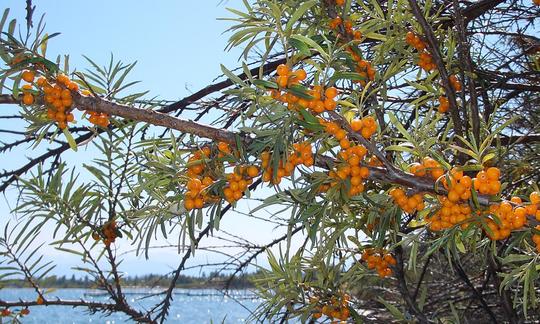

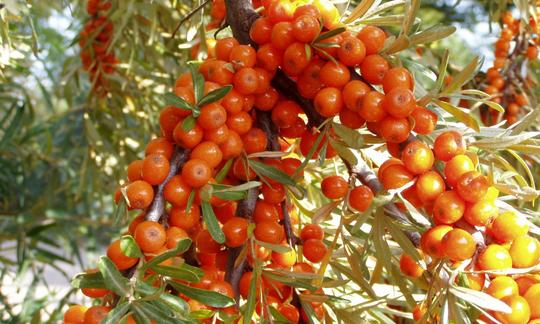

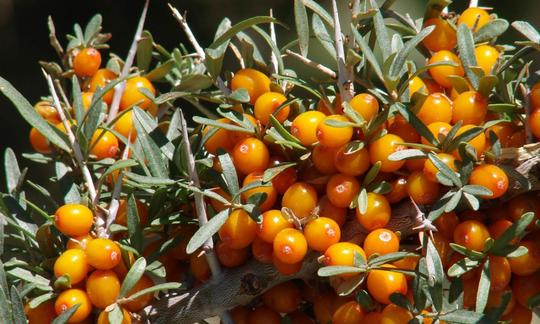

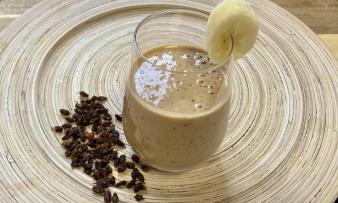
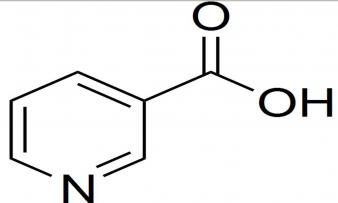




Comments